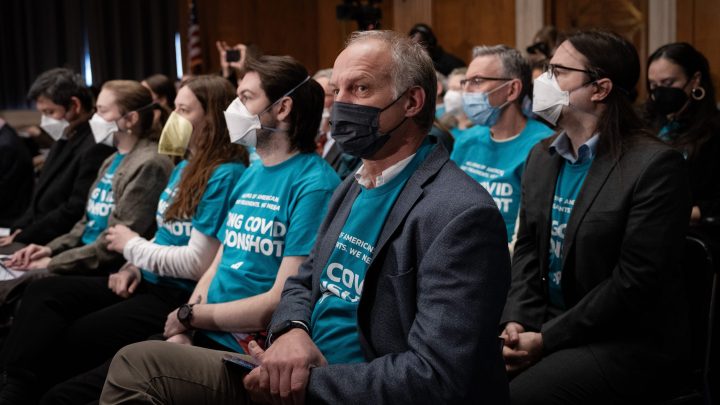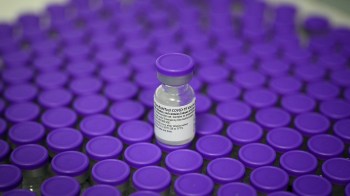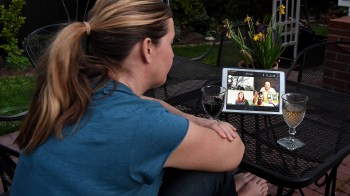
Protecting yourself from COVID-19 these days is hard. And it comes at a cost.
Protecting yourself from COVID-19 these days is hard. And it comes at a cost.

Four years after that surreal, world-altering spring of 2020, almost everything has gone back to normal. On the surface, anyway. Restaurants and subways are packed, schools and offices are open, few people are masking, and the Centers for Disease Control and Prevention has dropped its isolation guidelines.
But there is still a pandemic, and nearly 1,000 people are still dying from COVID-19 weekly in the United States, according to data from the World Health Organization via KFF. At least 17.5 million adults are currently living with long COVID, according to the most recent Household Census Pulse Survey. And there are new studies coming out all the time about the long-term damage even a mild infection can do to the body.
For those still trying to actively avoid getting COVID-19, like Forest McDonald, a musician and teacher in Brooklyn, New York, it’s getting increasingly difficult, and expensive.
At 34, McDonald is already living with long COVID, from their first and only known infection, two years ago.
“It started with really intense fatigue, where I couldn’t walk a block without needing to lie down,” they said. “Then it turned into chest pain and heart palpitations, and then it settled with kind of a constant shortness of breath.”
Now, McDonald is worried that, if they get COVID again, it could make their symptoms worse. So they spend a lot of time, energy and money trying to prevent that from happening.
“I invested in an e-bike so I can get to my lessons without exerting myself too much,” McDonald said. “It also helps me avoid the subways.”
They’ve also spent a lot on air purifiers and good masks, as well as on nasal sprays, eye drops and mouthwash that at least some early research shows might help protect against COVID-19.
“I don’t know if they’re even working,” McDonald said. “But it just is partly peace of mind, and one extra thing I can do when I feel like I don’t have a lot of control.”
A lot of people are doing this — trying to keep up with the latest medical and scientific research, sharing studies on social media and buying and trying any products that show promise.
“It’s really understandable that many people are searching for solutions individually, because the government isn’t doing enough to address the long-term impact of COVID,” said Lucky Tran, director of science communications at Columbia University Irving Medical Center.
“For a lot of these tools, like nasal sprays, it’s still very early, and the evidence is mixed on how effective they are,” he said. “So we really need governments to invest in solutions.”
Invest in both new solutions — including better vaccines and treatments — and existing ones that have already been proven to help reduce the spread of COVID-19.
“For example, air filtration is something that can be implemented in buildings and hospitals and schools, as well as humidification, which isn’t really often talked about, but is very important,” said Akiko Iwasaki, a professor of immunobiology at the Yale University School of Medicine. “And there are many other measures, like UV light, that may be implemented in buildings to try to prevent transmission.”
So far, though, there has not been widespread investment in improving indoor air quality, something that baffles Iwasaki.
“Companies would benefit economically by making the buildings safer for their own workers, right? That way there are less sick days and people are more productive, and it’s just better for their health,” she said. “It shouldn’t be up to the individual to have to spend their own money trying to do this.”
Right now, though, that’s the reality. People who are actively trying to avoid COVID-19 are on their own, and many don’t have the resources, or the option, to protect themselves.
In New Jersey, David Kronig, 40, has avoided COVID-19 so far “by basically giving up going anywhere,” he said.
He has a primary immunodeficiency, which makes him high-risk, and his partner and his mom are both immunocompromised and disabled. So Kronig still operates like most people did in 2020 — he’ll only go indoors if he has to, like to the doctor or the grocery store, he drives everywhere to avoid public transportation, and he spends a lot of money on N95 masks, HEPA filters and high-quality at-home tests.
He’s also worked remotely since 2020. Until recently, that wasn’t an issue. Kronig is a voting-rights and nonprofit attorney, and his last employer, in Wisconsin, was happy to accommodate. But when he left that job last year and started looking for a new one, his need to be fully remote slowed down his search.
“There are some jobs that I would otherwise be interested in that I simply chose not to apply to, because they seemed like they would require too much in-person work,” he said.
Others seemed like they could be done remotely, but then he’d learn in the interview process that they wanted everyone in the office two or three days a week. Then there was one where it seemed like he was about to get an offer until he was told, near the end of the process, that the job required travel.
“Had I not needed to protect my health, I’m fairly confident that I would have had that job in November,” Kronig said. “So literally, I would have been working for four months that I then continued to have to search for a job.”
And he wouldn’t have had to keep paying over $800 a month to have health insurance through COBRA. Eventually, though, after a long search, Kronig did finally land a new remote job — he just started this month.
In Brooklyn, COVID-19 is also affecting Forest McDonald’s career. It has prompted them to make a switch.
“I decided to go back to school to become a mental health counselor, because I want to be able to work virtually and have lower exposure,” they said. “And also, if my long COVID gets worse, and I can’t physically make it to my lessons, I will be stuck without income.”
Long-term, Dr. Ziyad Al-Aly, a clinical epidemiologist at Washington University in St. Louis, said it should not be up to individuals to have to figure out ways to protect themselves from this virus.
“The government has a duty to protect its people, and businesses also have a duty to make sure that their employees are protected,” he said. “There needs to be investment and approaches to block transmission. We cannot rely on masking forever. We cannot ask people, even immunocompromised people, to mask for the next 100 years.”
COVID-19 isn’t going anywhere, and given all the evidence about how much lasting damage it can do to the body, Al-Aly said, “we’re going to have to figure out a sustainable way of protecting the population from it.”
There’s a lot happening in the world. Through it all, Marketplace is here for you.
You rely on Marketplace to break down the world’s events and tell you how it affects you in a fact-based, approachable way. We rely on your financial support to keep making that possible.
Your donation today powers the independent journalism that you rely on. For just $5/month, you can help sustain Marketplace so we can keep reporting on the things that matter to you.

















